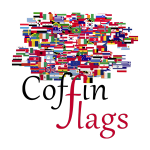Description
 Portugal, officially the Portuguese Republic, is a country located mostly on the Iberian Peninsula, in southwestern Europe. It is the westernmost sovereign state of mainland Europe, being bordered to the west and south by the Atlantic Ocean and to the north and east by Spain. Its territory also includes the Atlantic archipelagos of the Azores and Madeira, both autonomous regions with their own regional governments. Portugal is the oldest nation-state on the Iberian Peninsula and one of the oldest in Europe and the world, its territory having been continuously settled, invaded and fought over since prehistoric times. Portugal has been a semi-presidential representative democratic republic since the ratification of the Constitution of 1976, with Lisbon, the nation’s largest city, as its capital.
Portugal, officially the Portuguese Republic, is a country located mostly on the Iberian Peninsula, in southwestern Europe. It is the westernmost sovereign state of mainland Europe, being bordered to the west and south by the Atlantic Ocean and to the north and east by Spain. Its territory also includes the Atlantic archipelagos of the Azores and Madeira, both autonomous regions with their own regional governments. Portugal is the oldest nation-state on the Iberian Peninsula and one of the oldest in Europe and the world, its territory having been continuously settled, invaded and fought over since prehistoric times. Portugal has been a semi-presidential representative democratic republic since the ratification of the Constitution of 1976, with Lisbon, the nation’s largest city, as its capital.
The flag of Portugal is a rectangular bi-colour with a field divided into green on the hoist and red on the fly. The lesser version of the national coat of arms (i.e. armillary sphere and Portuguese shield) is centred over the colour boundary at equal distance from the upper and lower edges. On 30 June 1911, less than a year after the downfall of the constitutional monarchy, this design was officially adopted for the new national flag of the First Portuguese Republic, after selection by a special commission whose members included Columbano Bordalo Pinheiro, João Chagas and Abel Botelho. The green symbolises hope for the future; the red symbolises the blood of the nation. The Portuguese coat of arms has a white shield (containing five small blue shields with white dots) within a red shield (with seven small yellow castles), surrounded by yellow straps. The five blue small shields represent the five Moorish kings who were defeated by the first King of Portugal.








Reviews
There are no reviews yet.